Notes
The State of the News Photo: Part 3 of 3
This is the final part of the online version of the “State of the News Photo,” a talk presented June 23, 2012 by Michael Shaw, publisher of BagNews, at the Photoville festival in Brooklyn. You can find the three post archive here.
*** *** ***
The News Photo as Opportunity and Suggestions for a More Expanded Editorial Role
Having looked at these three areas— The visual selling of the President, war, and political celebrity, the question is: how is photojournalism and visual media. To address the visual framing power of these ever more elaborately-meditated and crafted photo-ops when the story, as much or more today, IS the framing.
The fact is, photojournalism is in an ambiguous space whichever way it goes –
if its pretends to be visually objective in the face of a White House or a Pentagon or a political celebrity culture that is relentlessly manipulative — or if it delivers a photo which does question, undermine or in some cases, flat out challenges and confronts carefully developed themes and memes and stage craft.
The way forward in my mind is a frank acknowledgement of the editorial nature and function of the news image — allowing the photographer to more openly approach a scene the way any reporter would treat any interview or any subjective claim.
This approach would allow for a broader range of editorial stances, especially to treat visually preconditioned scenes, including the utilization of the photograph as either: objective news, opinion, investigation, or cultural or political commentary.
A good example of a news photo this campaign season that might be recognized more openly as commentary is this photo by Evan Vucci as it reflected on the GOP primary campaign and the brutal U.S. recession.
Rather than ceding Newt Gingrich his industrial backdrop using factory workers in Cleveland as window dressing, Vucci flps the campaign to the background, as a drama removed from the workers themselves, the alignment of each women to her own American flag now an ironic element in the interstitial space. Viewed this way, what we see is the distant candidate pontificating by rote on what’s good for the working man, juxtaposed with citizens likely too bound to meet quota to participate in democracy in action.
I believe we seen many fine instances also where photographers have pushed the filter to reveal a more candid impression of the war, or the propaganda suppression, or both.
Perhaps no photographer has been as outspoken as Michael Kamber, shooting for the New York Times, in speaking out and continually challenging the military in the face of shifting rules about censorship.
This soldier, a female basketball player with some notoriety, had lost her arm. Fellow soldiers threatened to shoot if Kamber snapped the picture.
Over the past few years, Kamber has been relentless in documenting that suppression and publishing of photos he and The NYT had been previously not allowed to use.
These are photos from an attack suffered by US troops in Latifiyah, Iraq in May 2007.
Mike relates how he ran out and started photographing and Captian a yelled: “No pictures!” Mike dared him to take his cameras away, and kept shooting.
Afterwards, Mike was threatened with being kicked out of the embed if the photos, particularly of one wounded soldier, were published.
So they proposed to run a photograph of him at a distance.
Then he was told that he couldn’t show pictures in which the face of any other soldier in the unit was identifiable.
Then he was asked if any military patches were identifiable.
Finally, he found the one photo where there were no patches available either and the New York Times ran that one.
The PR Agenda
As regards PR propaganda and personality spin,I believe the visual media can be more consistent about running images that contravene personality spin and check these personality constructions.
The photo above stood out for me simply for placing the glamourous Asma al-Assad in a more militaristic context.
Here we see Donald Trump losing some luster earlier this year when BusinessWeek ran this slapdown as The Donald was flirting with running for President and getting mostly gushing attention for it.
Here we see Rick Santorum, having loosened up the pious veneer after dropping out of the Presidential race, seeking out c at the White House Correspondent’s Dinner.
And, prompted as a phenom and compared to Harry Truman at her convention unveiling, this little noticed photo is a gem, showing Sarah Palin, the newly named, camera happy but not very informed Vice Presidential candidate, being tutored on the fly by John Mcain’s chief advisor, Steve Schmidt.
If we’d only seen more of these types of scenes at the time.
Expanded Functions and Roles of the News Photo – Reading the Pictures

Beyond a more editorial response to the White House, political campaigns, the Pentagon and personality PR, I believe there is larger opportunity in the current visual environment to clarify and draw more meaning out of pictures, especially those embraced in an unsuspecting way by the media as well as social media.
This viral image from Canada shot following the Stanley Cup finals in 2002, popularly referred to as “The Riot Kiss,” was perceived, and circulated world wide, as two young people making out during a riot.
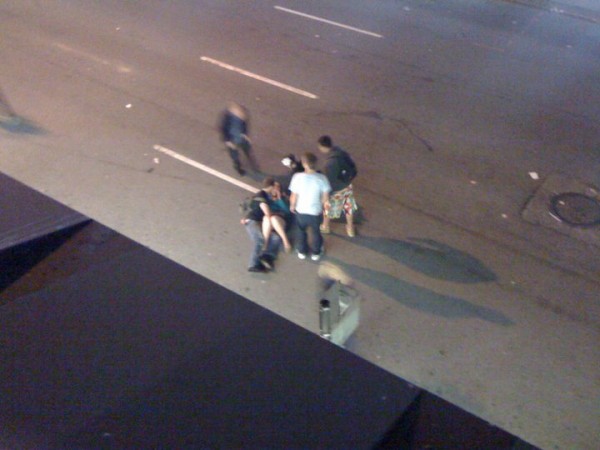
Follow-up interviews and analysis of video, however, showed that, far from lingering, the young woman had just been knocked down and injured by a riot cop, the couple scrambling to their feet as soon as she could to escape a fresh rush of police coming down the street.

I really love Michelle Obama’s official White House portrait, by the way, but I’m not sure how many people realized the powerful and historic statement here.
If you notice, the picture was taken in the Blue Room in front of (the former slave-owning) Thomas Jefferson.
Perhaps we could benefit from a more investigative or forensic approach to key photos, the elements of a picture examined for clues which help us understand the true facts surrounding the photo and how it confirms or contradicts its usage.
Everybody knows about “The Pet Goat” photo, but how many people are familiar with this White House image? Based on the time on the clock and the papers in front of him — the speech George Bush was writing to present to Booker Elementary School after he finished reading to a classroom — this White House photo illustrates that George Bush spent still another extra half-an-hour at the school on the morning of 9/11 than most people realize.
With the onset of police crackdowns on Occupy Wall Street, this photo ran on the front page of the Washington Post and in many other media outlets asserting that an Occupy demonstrator had tackled a NYPD officer. The photo was one of the first to ascribe a violent motive to the overwhelmingly non-violent movement.
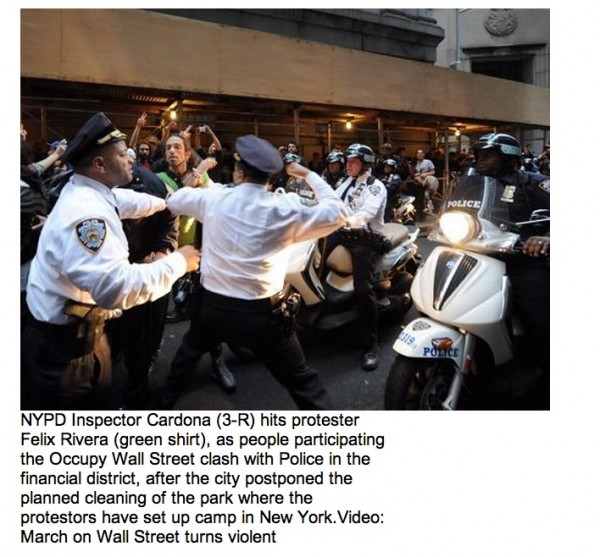 This photo was taken just a few feet from, and just instants before the “falling man” photo. I shows NYPD inspector Cardona punching a citizen, Felix Rivera, the man in the green shirt. From there, bodies start to fly.
This photo was taken just a few feet from, and just instants before the “falling man” photo. I shows NYPD inspector Cardona punching a citizen, Felix Rivera, the man in the green shirt. From there, bodies start to fly.
In assessing the “falling man” photo (and based on over a dozen other photos taken in close time and proximity to this incident) it is impossible to determine if this demonstrator really tackled the policeman or he was just falling over him and bracing to hit the ground. In an interview with the photographer who took the “falling man” photo, by the way, he said he couldn’t tell what had transpired either.
And here is another kind of investigative opportunity:
Last year, there was a lot of tension and drama at the UN as Palestinian President Abbas formally submitted an application for Palestinian statehood. With Israel’s President speaking after Abbas, there was a lot of concern about how he would react.
Using a telephoto lens, these photos by Getty’s Mario Tama offered a unique insight into the psychological and strategic reaction by the Prime Minister, the photos clearly showing the emphatic handwritten edits he had made to his speech. Upon hearing Abbas and worried about losing his key ally, many of the scribbled additions are appeals directed specifically at the United States not to bend to Abbas’ gesture.
Perhaps the visual media might also take a more critical look at how the media itself can tend to propagate visual gender and racial bias:
With the just released police report alleging Trayvon Martin had attacked Zimmerman, and less-than-complementary history coming out about Martin – that he had been caught with trace amounts of pot in his backpack; that he was only in Florida because he was on suspension from school — there was a pendulum swing for a couple of weeks in the media toward a more critical treatment of Martin.
This was best characterized by a photo of Trayvon ABC pulled off a memorial flier representing the six-foot-three seventeen year old with almost a tagger vibe.Context-wise, it’s one thing for the image above to be published on a flier circulated in the black community announcing Tayvon’s memorial.
It’s another thing, however, the way ABC extracted the image from the flier so it lost its R.I.P.-meaning, cropping it so that the skull-and-cross bones no longer related to Trayvon’s name and the coloring under those letters now read like drips of blood.
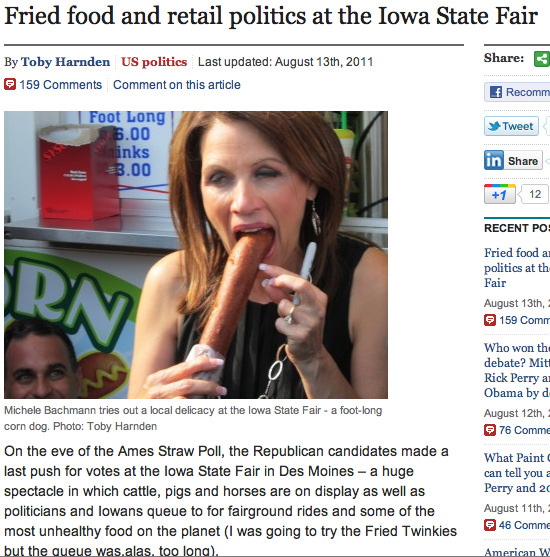
A whole conference could be devoted to news photos and sexual bias. Suffice to say, this photo caused quite a stir in the early campaign 2012 season for its sexual suggestiveness. Of course, many wire photos were published of the GOP candidates digesting corn dogs at the Iowa State Fair. But those shots seemed to all maintain an adequate buffer of good spirit and humor .
Not this one, however, taken by a British news writer, Toby Harnden of The Telegraph, who snapped it himself for his own column – imparting a fellating suggestion with the eyes rolled back, and the guy on the left seemingly leering.
Published almost the same time, this Newsweek cover of a bug-eyed Bachmann also invited an extended online debate about politics and sexism.
Conclusion
I hope I have been able to enlighten you about the nature and function of today’s news photo: as it straddles public culture and the news industry; as it assumes a much larger role in spin culture, and as a much larger editorial and informational vehicle in its own right.
In concluding, I have to say it’s a very dynamic time for the news photo, and I couldn’t be more interested to see how this imagery, as a vehicle of meaning, challenge and dialogue, continues to grow in its impact.
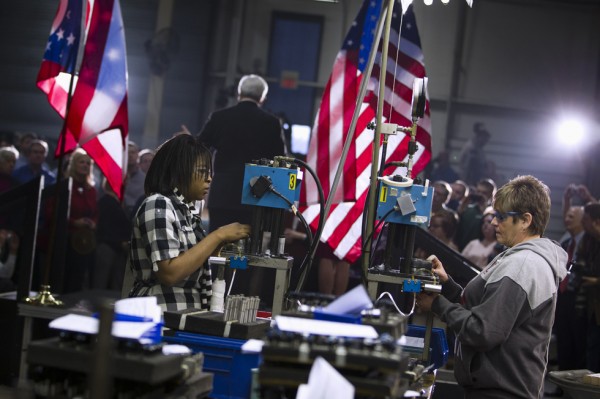
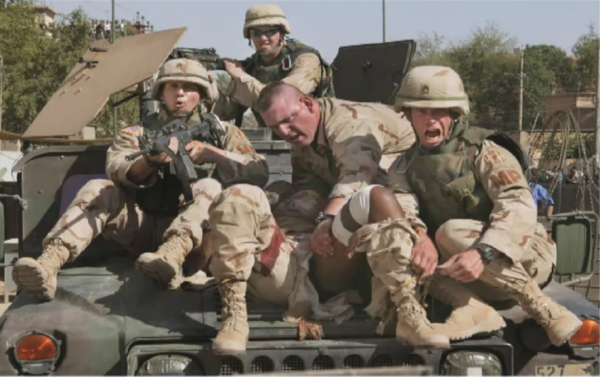
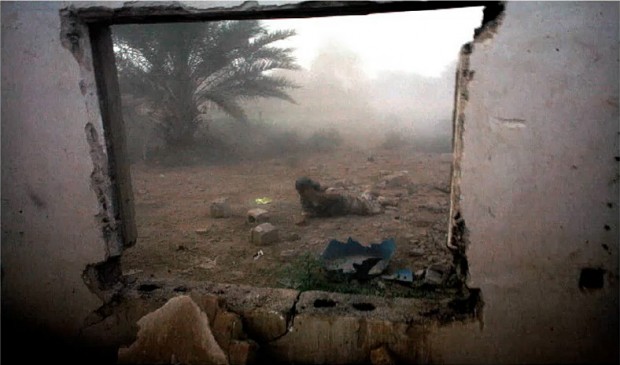
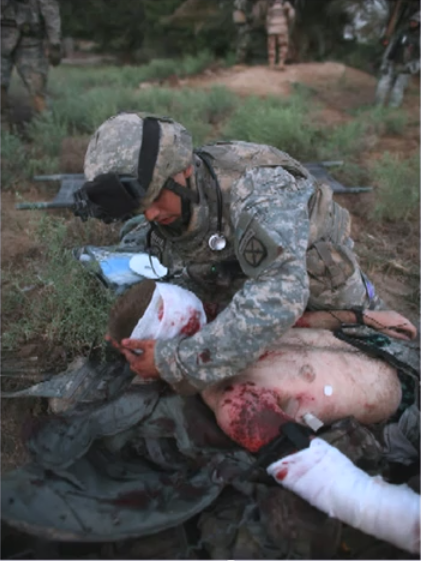
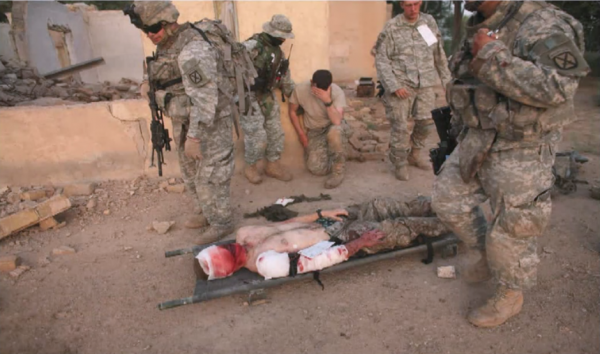
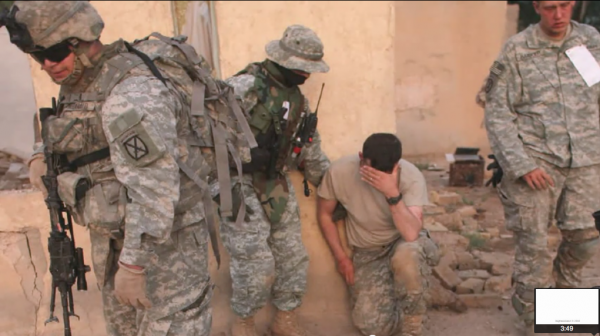
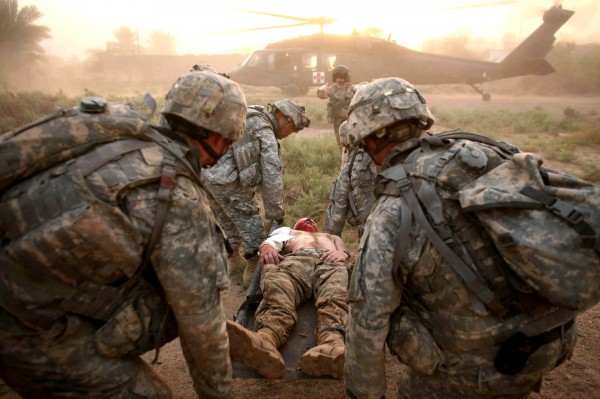
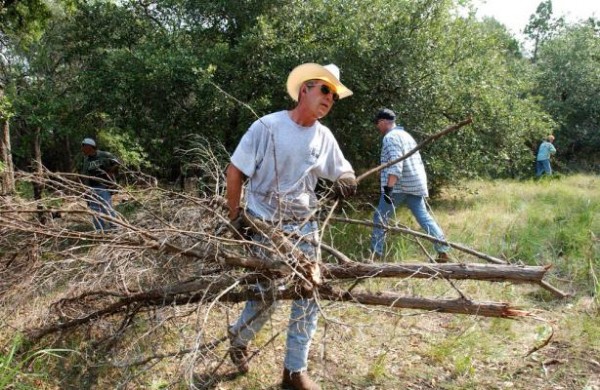
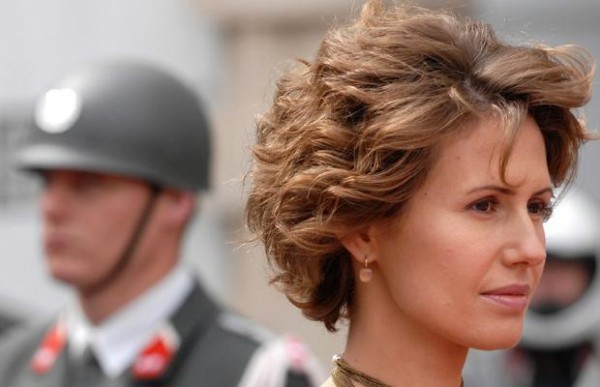
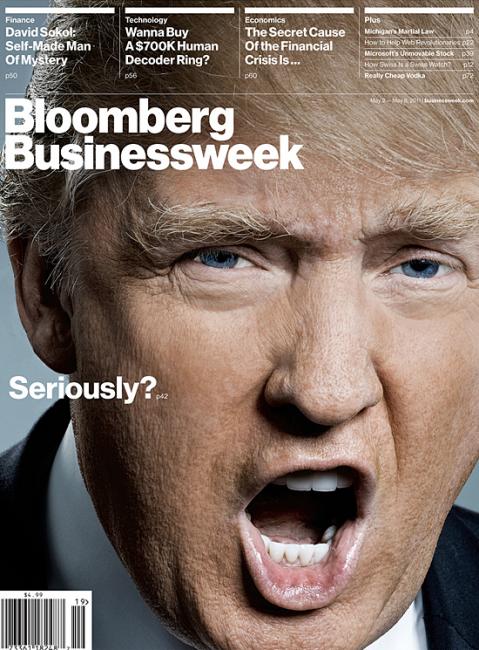
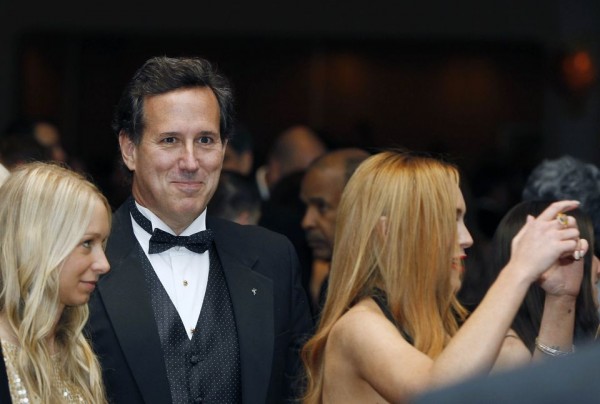
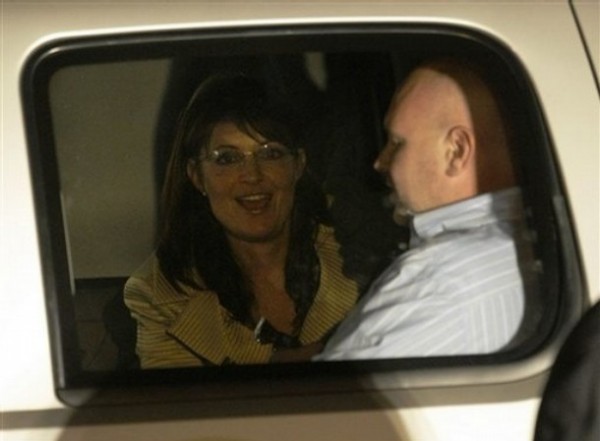
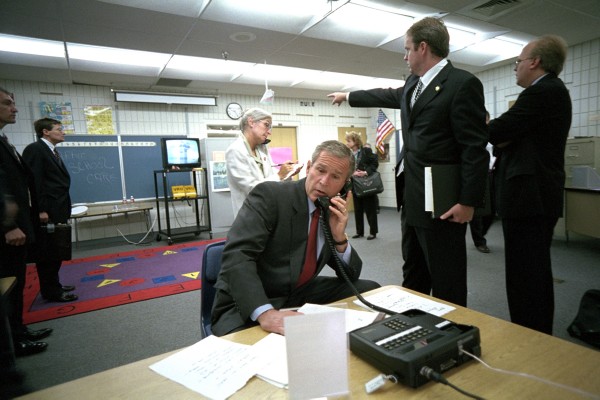
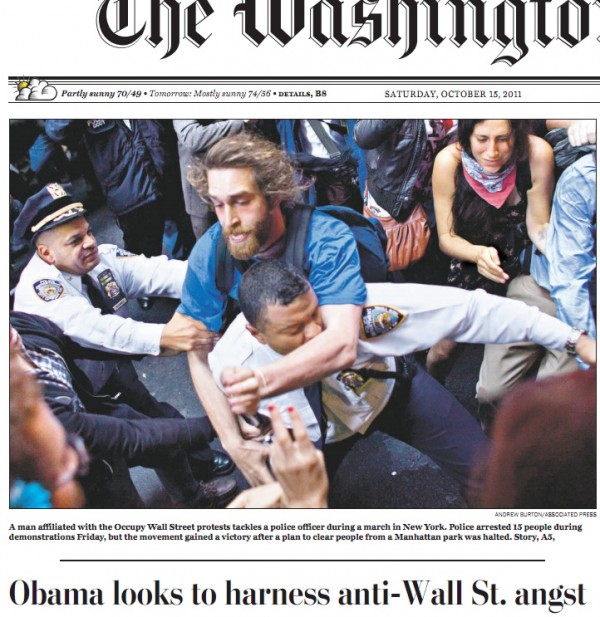
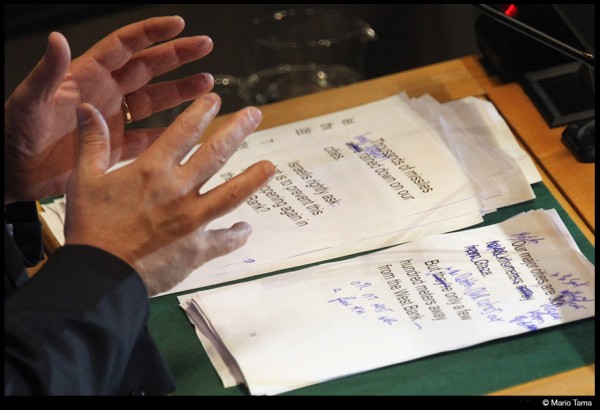
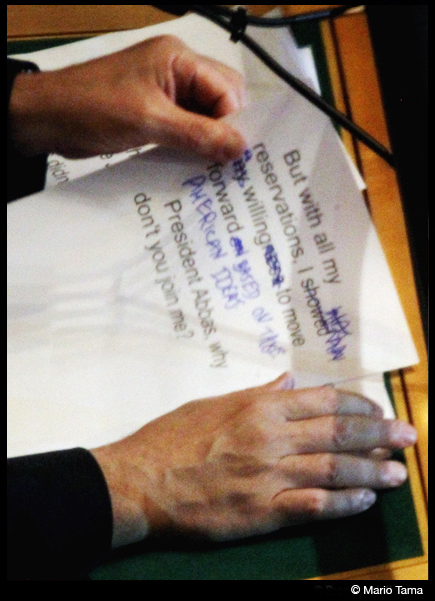
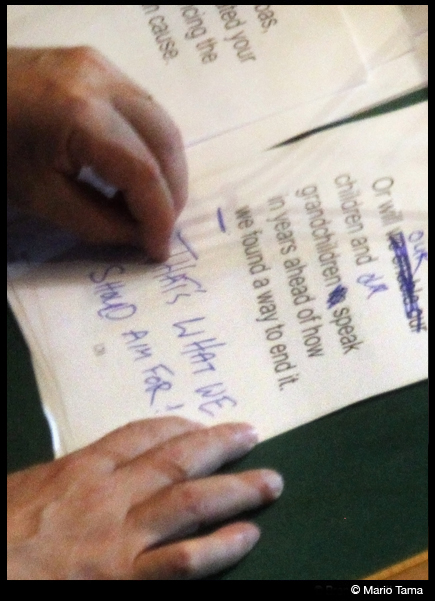
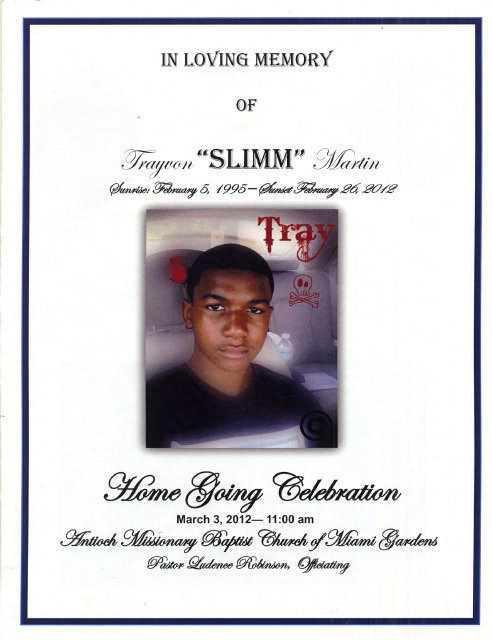
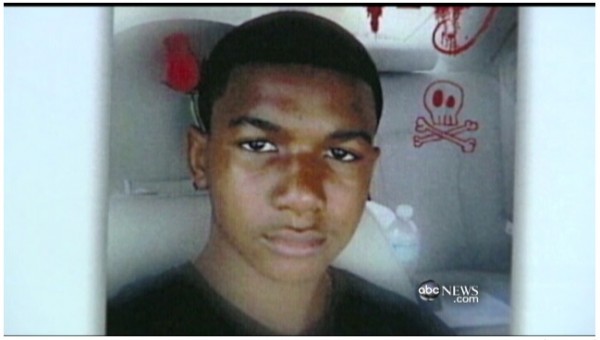
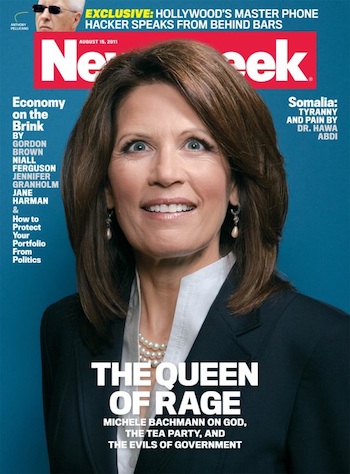
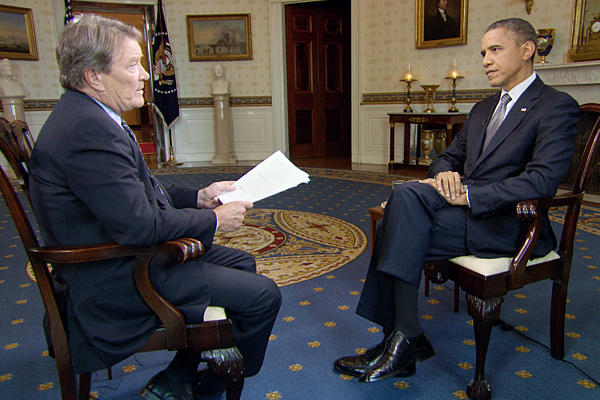
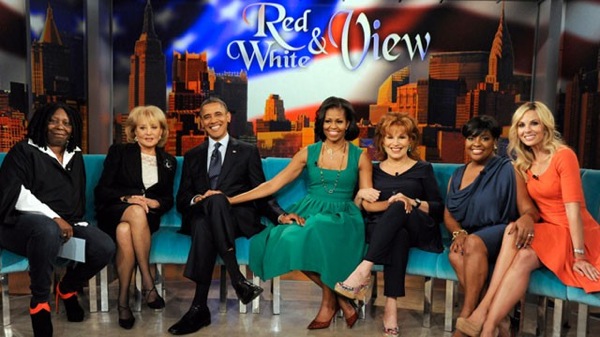
Reactions
Comments Powered by Disqus